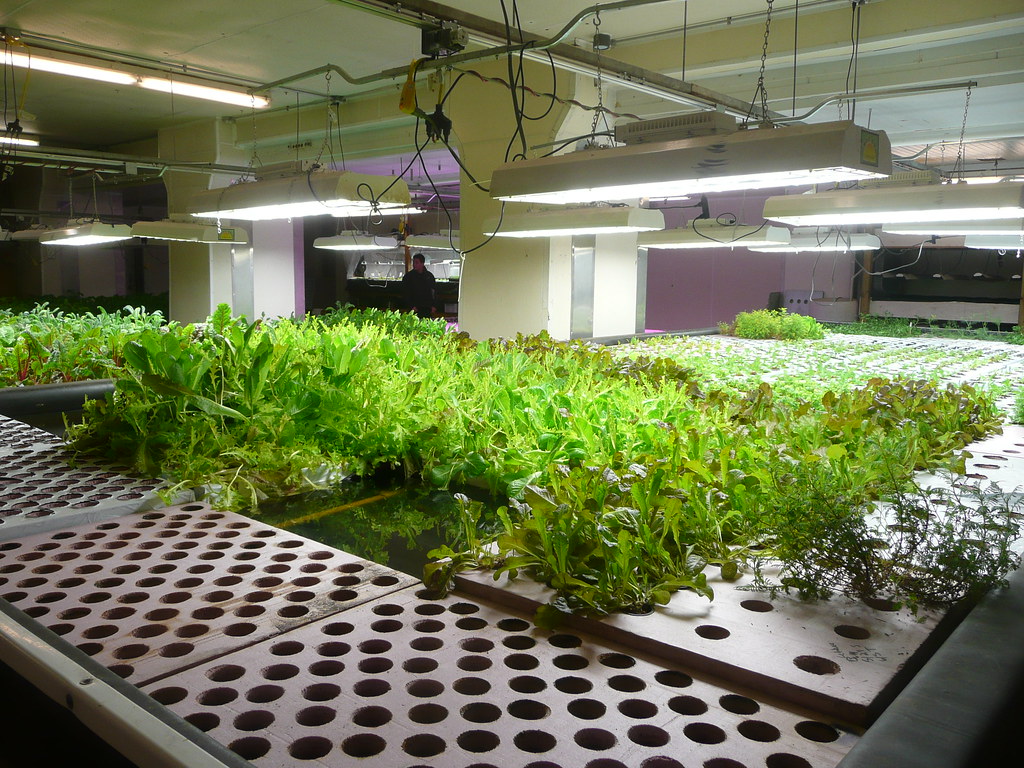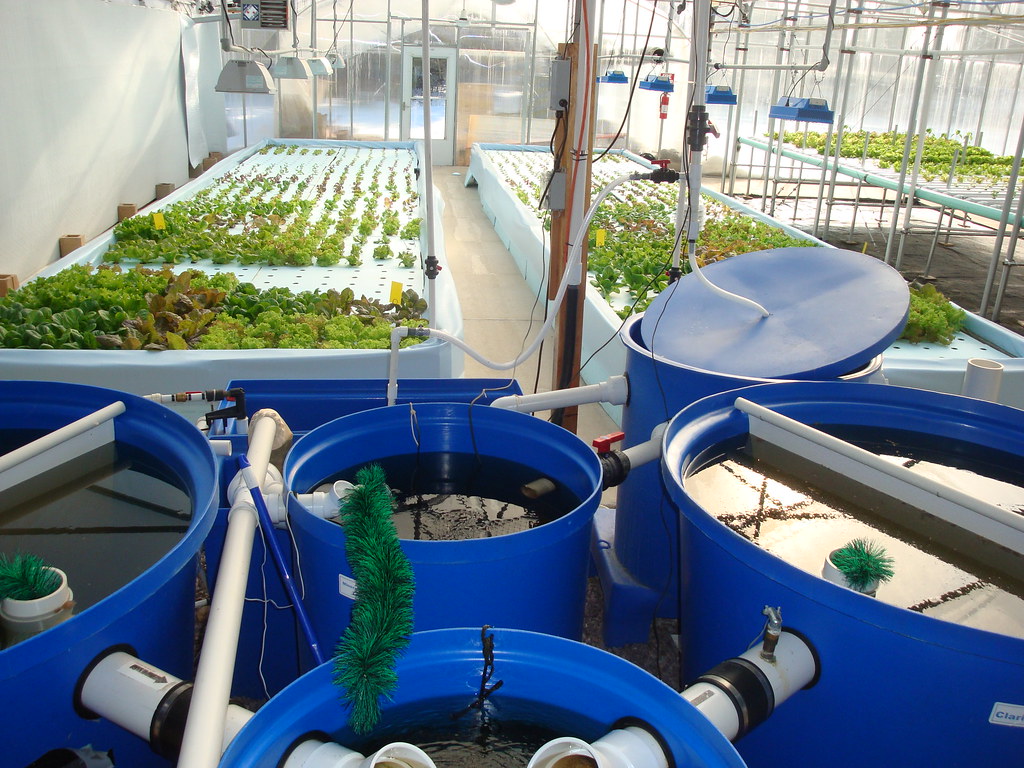
Introduction to Aquaponics
Aquaponics is a sustainable method of farming that combines aquaculture (the farming of aquatic animals) with hydroponics (growing plants in water without soil). It is a closed-loop system, where the waste produced by fish or other aquatic animals is used to fertilize the plants. In turn, these plants filter and purify the water, creating a symbiotic relationship between the fish and plants.
Setting up an Aquaponics System
Setting up an aquaponics system may seem intimidating at first, but it can be a rewarding and sustainable way to grow food. Here are some key steps to consider when setting up your own aquaponics system:
- Choosing the Right Location: The location of your aquaponics system is crucial for its success. It should receive adequate sunlight for the plants to thrive and be close to a water source. Indoors, a greenhouse or a dedicated room with proper temperature control can be ideal.
- Selecting the Aquatic Animals: Fish are the most common aquatic animals used in aquaponics systems, but other options such as crayfish, prawns, or even marine animals like shrimp can also be considered. Make sure to choose a species that can adapt well to the local environment and water conditions.
- Determining the Plant Beds: In aquaponics, the plants are typically grown in grow beds that are filled with media such as gravel or expanded clay pellets. These beds serve as a home for beneficial bacteria that convert the fish waste into plant nutrients. The size and number of the grow beds will depend on the scale of your system and the type of crops you plan to grow.
- Setting up the Water Circulation: A well-designed aquaponics system requires a proper water circulation system. This ensures that the water is continuously flowing through the fish tank, the grow beds, and back to the fish tank. This constant circulation also helps provide oxygen to the fish and distribute nutrients to the plants.
- Establishing the Biological Filter: The biological filter is a critical component of the aquaponics system. It consists of a bed or tower, where beneficial bacteria colonize and convert toxic ammonia from fish waste into nitrites, and then into nitrates, which are essential nutrients for the plants. This filter is responsible for keeping the water clean and keeping the ammonia levels in check.
- Balancing the System: Maintaining proper pH levels and water temperature is crucial for a successful aquaponics system. Regular testing and monitoring of these parameters are necessary to ensure the overall health of the fish and plants. Adjustments may also need to be made to maintain the right nutrient levels for healthy plant growth.
- Introducing Fish and Plants: Once the system is balanced, you can introduce fish and plants into your aquaponics system. It’s important to start with a small number of fish and gradually increase the population as the system matures. Similarly, select plants that are well-suited for hydroponic growing and can tolerate the specific water conditions.
By following these steps and properly maintaining your aquaponics system, you can create a sustainable and productive environment where both fish and plants thrive together. With some patience and dedication, you’ll be able to reap the benefits of fresh and healthy produce while reducing water usage and minimizing waste.
The Benefits of Aquaponics
- Efficient use of resources: Aquaponics uses up to 90% less water compared to traditional soil-based farming. The water is recirculated within the system, reducing the need for constant irrigation. Additionally, there is no need for chemical fertilizers, as the nutrients come from the fish waste.
- Organic and pesticide-free produce: Aquaponics allows for the production of organic fruits, vegetables, and herbs. The closed-loop system eliminates the use of pesticides, resulting in healthier and more natural produce.
- Year-round production: Aquaponics systems can be indoor or outdoor, allowing for year-round production regardless of the climate. This is particularly advantageous in regions with harsh winters or limited arable land.
- Increased crop diversity: Aquaponics opens up opportunities for growing a variety of crops simultaneously. The plants in an aquaponics system can range from leafy greens like lettuce and spinach to fruiting plants like tomatoes and peppers. This diversity not only provides a wider range of produce but also helps to create a balanced ecosystem within the system.
- Low environmental impact: Aquaponics minimizes the negative impact on the environment compared to conventional farming methods. The recirculating water system reduces the risk of water pollution, and the absence of soil-based agriculture decreases the potential for soil erosion and nutrient runoff.
Conclusion
In conclusion, aquaponics is a sustainable and efficient method of farming that combines aquaculture (fish farming) with hydroponics (growing plants in water). With its numerous benefits, aquaponics is gaining popularity as an alternative to traditional farming methods.
By utilizing a closed-loop system, aquaponics reduces water usage and eliminates the need for chemical fertilizers and pesticides. This not only leads to healthier and more natural produce but also contributes to the conservation of resources and the protection of the environment.
Aquaponics also offers the advantage of year-round production, regardless of the climate or available arable land. This allows for a steady and consistent supply of fresh food, even in regions with harsh winters or limited agricultural space.
Furthermore, aquaponics provides the opportunity for crop diversity. From leafy greens like lettuce and herbs to fruiting plants like tomatoes and cucumbers, there is a wide range of crops that can be grown simultaneously in an aquaponics system. This not only provides variety in the produce but also creates a balanced ecosystem within the system.
Whether you are a small-scale home gardener looking to grow fresh food for your family, or a commercial farmer seeking a sustainable and profitable farming method, aquaponics offers a solution. Its low environmental impact reduces the risk of water pollution, soil erosion, and nutrient runoff. This makes it an eco-friendly choice for farmers who want to minimize their carbon footprint and protect the surrounding ecosystem.
One of the key advantages of aquaponics is its efficient use of water. By recycling and reusing water within the system, aquaponics uses only a fraction of the amount of water required for traditional soil-based farming. This is especially significant in areas facing water scarcity or drought conditions.

